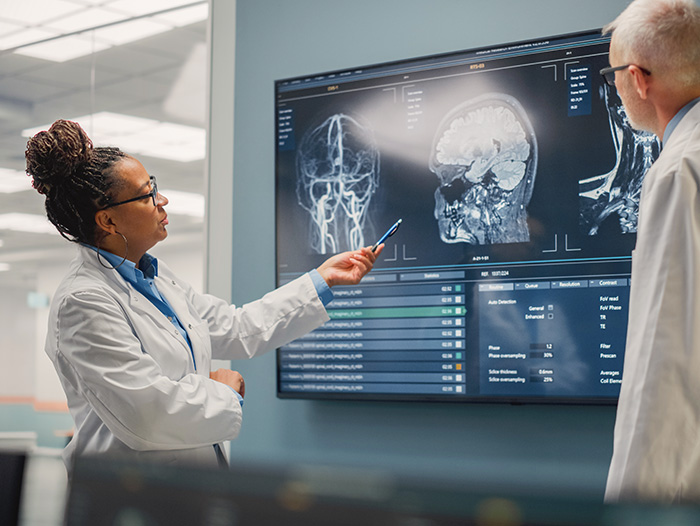Here's how Goldman Sachs sees AI's future. This recently roundup from Goldman Sachs is packed with interviews, projections, and “what all of this means for the S&P 500.” Goldman’s views are largely aligned with those from McKinsey, anticipating excess growth in productivity and GDP of 1-2% per year over the next decade. But the report underscores that these projections are wildly uncertain, offering scenarios that cover a 10-fold range in growth rates — from 0.3% up to nearly 3%.
Microsoft and Google are dueling to create AI tools for doctors. The Wall Street Journal rounds up the latest efforts by tech giants to deploy chatbot technology to doctors. Among the players: Google's MedPaLM 2, OpenAI's GPT, Mayo Clinic, and Epic. Big Tech’s ambitions may not remain limited to the doctor's office for long: “Both Google and Microsoft also have expressed interest in … building a virtual assistant that answers medical questions from patients around the world,” the Journal reports.
Google-backed Anthropic launches Claude 2. Claude is a leading LLM chatbot, competitive with ChatGPT in many tasks and with greater ability to process extremely long texts (up to book length). Their newest model is live now, and it achieves solid results on benchmarks ranging from the GRE to the USMLE Medical Exam.
Bill Gates: 'The risks of AI are real but manageable.' Writing on his blog, Gates offers an optimistic-on-the-whole view that humanity can overcome the risks posed by AI. Still, he gives a daunting rundown of the dangers: He warns AI could undermine democracy via deepfakes and misinformation, aid in attacks against people and governments, destroy jobs, perpetuate human biases, and upend traditional modes of education.
Need some ancient Akkadian translated? Ask an AI. This one's just fun: Apparently, many of humanity's oldest surviving texts have never been translated because, well, not many people can read Akkadian cuneiform. So researchers have trained a neural network to do the job, with solid-if-imperfect results.
Don't miss out on the latest Advisory Board insights
Create your free account to access 1 resource, including the latest research and webinars.
Want access without creating an account?
You have 1 free members-only resource remaining this month.
1 free members-only resources remaining
1 free members-only resources remaining
You've reached your limit of free insights
Become a member to access all of Advisory Board's resources, events, and experts
Never miss out on the latest innovative health care content tailored to you.
Benefits include:
You've reached your limit of free insights
Become a member to access all of Advisory Board's resources, events, and experts
Never miss out on the latest innovative health care content tailored to you.
Benefits include:
This content is available through your Curated Research partnership with Advisory Board. Click on ‘view this resource’ to read the full piece
Email ask@advisory.com to learn more
Click on ‘Become a Member’ to learn about the benefits of a Full-Access partnership with Advisory Board
Never miss out on the latest innovative health care content tailored to you.
Benefits Include:
This is for members only. Learn more.
Click on ‘Become a Member’ to learn about the benefits of a Full-Access partnership with Advisory Board
Never miss out on the latest innovative health care content tailored to you.


